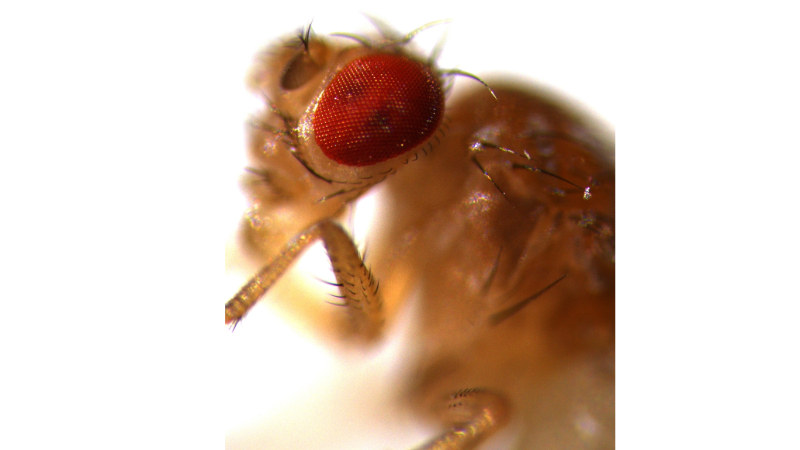Fruit flies give clues to sexual selection-driven evolution

They may be tiny, but fruit flies have given scientists new insight into the genetic basis for rapid evolution of male external genitalia driven by sexual selection.
Secondary sexual characteristics such as peacocks' tails and the male external genitalia of insects are known to be among the fastest evolving animal body parts.
It’s thought that this is driven by sexual selection including through female choice and the different evolutionary needs of each sex to find the right mate and maximise their fitness.
Now bioscientists at Durham University have led on research that has identified one of the genes that contributes to genital evolution between two closely related species of the minute insects. The project lead was Professor Alistair McGregor, in Durham University’s Department of Biosciences. Dr. M. Daniela S. Nunes, Senior Lecturer in Evolutionary and Developmental Biology at Oxford Brookes University, was a co-researcher.
Genome editing
They looked at the posterior lobes of the male genitalia of Drosophila simulans and Drosophila mauritiana.
These lobes have rapidly changed in shape and size in less than 240,000 years and those of Drosophila simulans are much bigger than those of Drosophila mauritiana.
They found that evolved higher levels of the gene Sox21b repressed the size of the genital lobes in Drosophila mauritiana, giving them smaller genital lobes than Drosophila simulans.
They did this by editing the genome of Drosophila mauritiana and Drosophila simulans to show that changes in Sox21b changed the posterior lobe shape and size. This also affected the mating duration of these flies.
Sexual selection
Sexual selection has been shown to drive evolutionary change in the genitalia of other insects and animals, but this is a rare case where a gene behind it has been identified.
As the posterior lobes are used by the male to grasp female flies during sex, the researchers say their findings could now help to better understand the effect sexual selection has on the genome to drive changes in genitalia shape and size.
-
Read more about this research in the journal Current Biology.
-
This research was funded by UKRI’s Biotechnology and Biological Sciences Research Council and Natural Environment Research Council.
